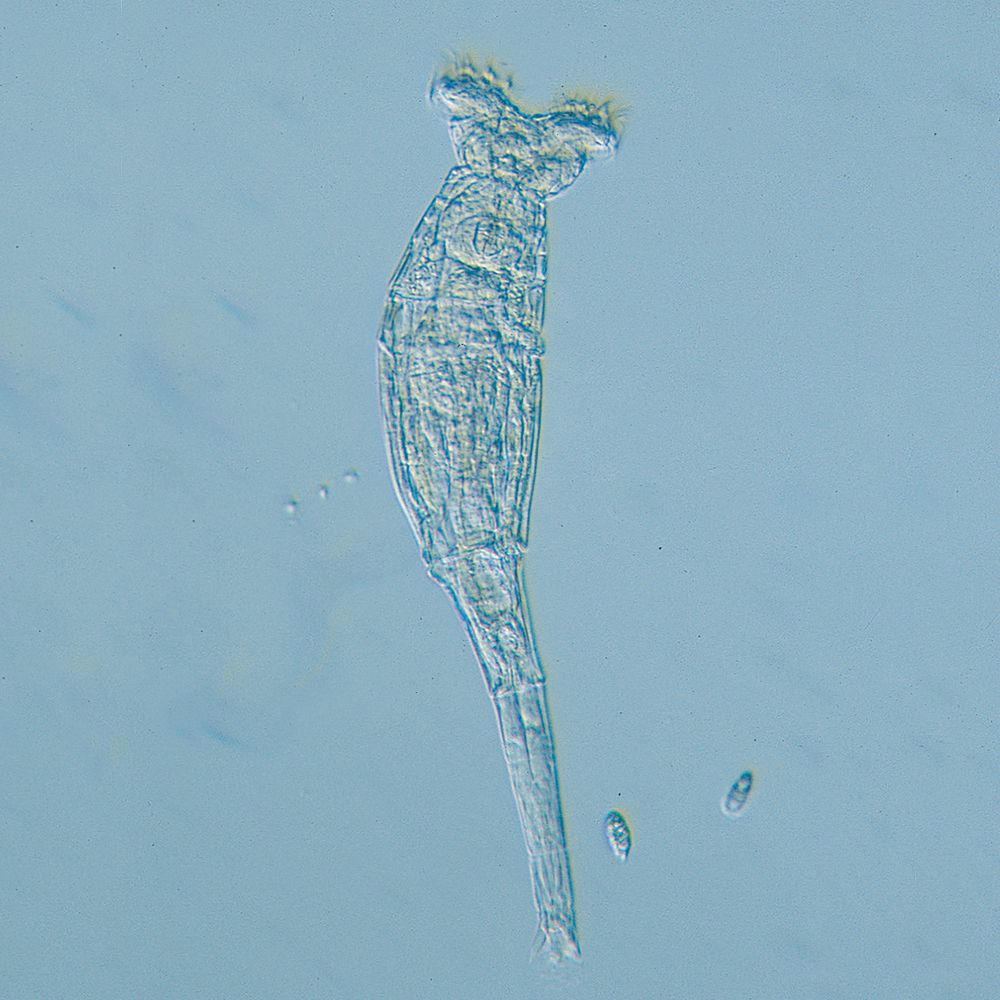My Cart
Your Shopping Cart is currently empty. Use Quick Order or Search to quickly add items to your order!

In this lab students compare an animal to an animal-like protist, or protozoan. The animal is Philodina, a rotifer, and the protist is Euplotes, a complex ciliate. Both are microscopic. Students will have to rely on their own observations and background knowledge to determine which is an animal and which is a protist.
dissecting needles or toothpicks
Ensure that students understand and adhere to safe laboratory practices when performing any activity in the classroom or lab. Demonstrate the protocol for correctly using the instruments and materials necessary to complete the activities, and emphasize the importance of proper usage. Use personal protective equipment such as safety glasses or goggles, gloves, and aprons when appropriate. Model proper laboratory safety practices for your students and require them to adhere to all laboratory safety rules. Philodina and Euplotes are not parasitic or pathogenic. Even so, know and follow your district’s guidelines so that you are prepared should a student ingest a culture. Cultures remaining after the completion of the activities may be flushed down a sink with tap water or added to an aquarium. The chlorine and chloramine in most tap water will kill the organisms. If your tap water is not chlorinated, pipet 1 mL of household bleach (sodium hypochlorite solution) or isopropanol (rubbing alcohol) into the culture and wait 15 minutes before flushing down the sink.
Students may work individually or in pairs.
Before the laboratory activity, brainstorm about the characteristics of animals and protozoa.
Tape over the labels on the culture jars to hide the names of the organisms, and mark the Philodina as “Sample 1” and Euplotes as “Sample 2.”
For each culture, set up a workstation with the following:
culture (Sample 1 or Sample 2)
dissecting needles or toothpicks
Protoslo®
microscope slides
dropping pipet
coverslips
Optional
You may broaden the activity to include other animals, such as Water Bears (133960), Copepods (142365), and Aeolosoma (141748), and other protists, such as Arcella (131310), Spirostomum (131590), and Stentor (131598).
Make a list of the characteristics of animals. (Answers will vary according to your students’ background knowledge.)
They are multicellular eukaryotes.
They are heterotrophs.
They develop from embryos.
All but sponges have cells organized into tissues.
All but sponges and cnidarians have organs for specialized functions.
They are motile in at least some stage of the life cycle.
Now make a list of the characteristics of protozoa. (Answers will vary according to your students’ background knowledge.)
Most are unicellular (although a few are colonial).
They are eukaryotes.
Most are heterotrophs.
Reproduction is usually by cell division.
There are no embryonic developmental stages.
They have subcellular structures (organelles) for specialized functions such as digestion.
Most are motile.
In the space below, record observations and characteristics of each organism that you view, focusing especially on features that will help you decide whether it is a protozoan or an animal.
Sample 1:
Body contracts and extends.
Anterior end with cilia on head. Note: Students who have previously studied Paracecium or other ciliates may be misled by this and assume that cilia are characteristic of protozoa only.
Internal organs are visible.
Appear to be head, body, and tail sections to the body.
Tail appears to telescope.
Can anchor itself in place.
Repeat with the other organism.
Sample 2:
Rigid body shape.
Covered with spikes (cirri).
Free swimming.
No head or other body sections.
Vacuole expands and contracts.
Which of the organisms is an animal? Give evidence to support your conclusion.
Sample 1 is the animal. It has internal organs. The organism in Sample 2 has a contractile vacuole, an organelle characteristic of protozoa. Note: Evaluate students’ responses not solely on the basis of answering correctly but also on the quality of their observations and their evidence.